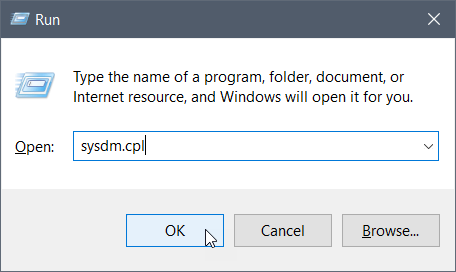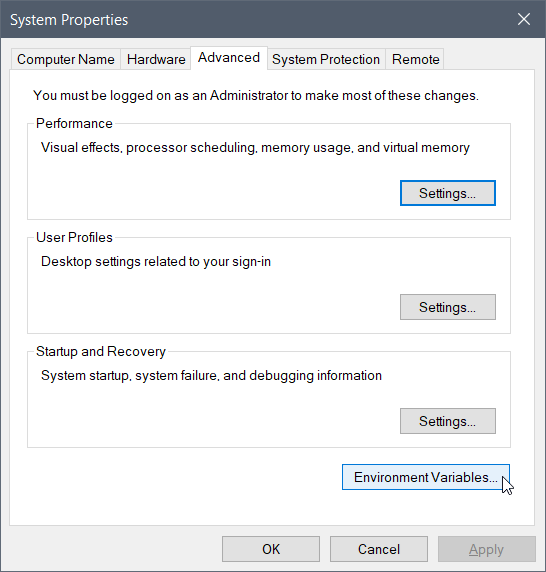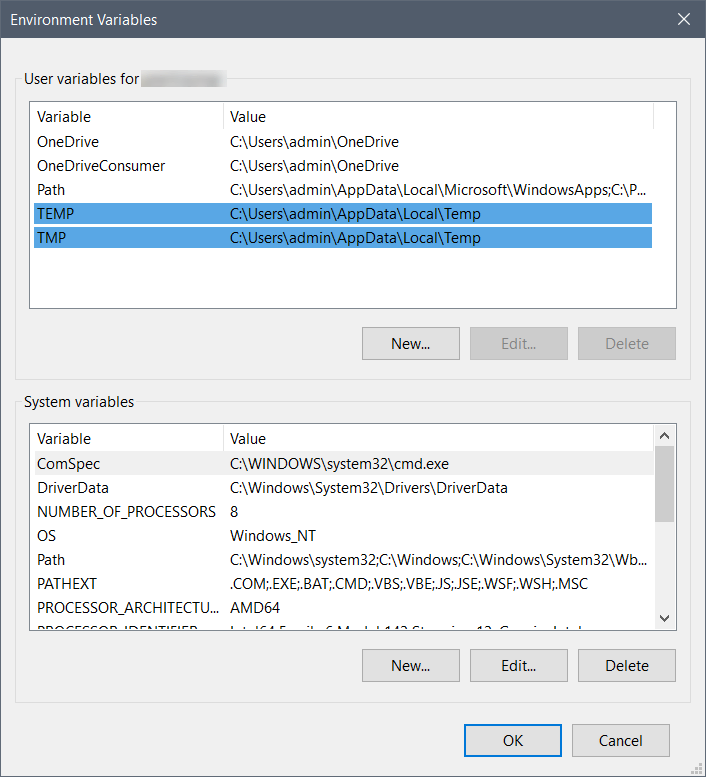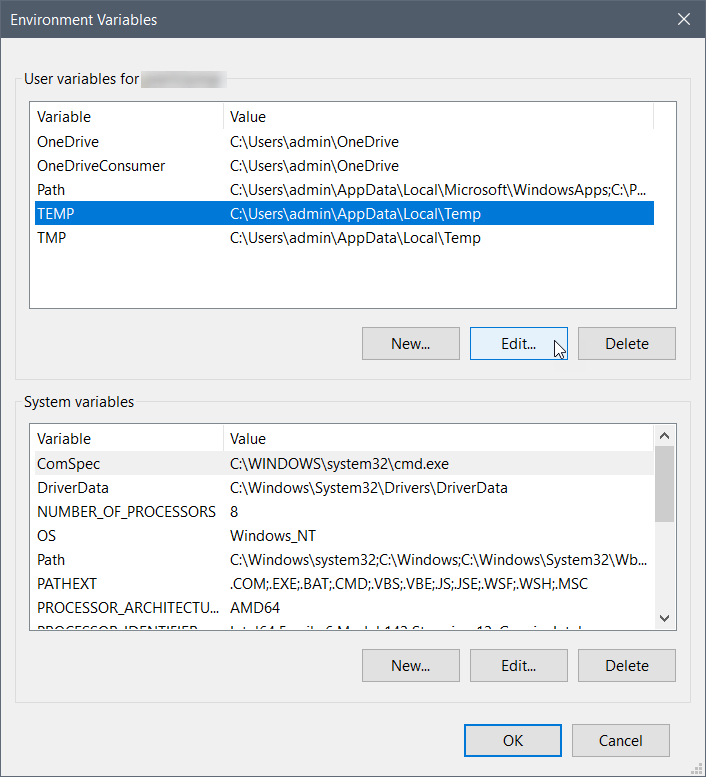CivilGEO’s engineering software saves temporary files in the system’s default temporary file storage location. Temporary files are often saved on the computer system’s local drive (generally, C: drive). When applications run for most of the day, however, the system fills up with temporary files and the local drive is at risk of running out of space.
This issue can be easily corrected by changing the temporary files storage location to a network drive or another local drive partition where storage is not an issue. This can be done by updating the TMP and TEMP environment variables path to alternative locations. Windows and our software will then use the newly identified location to save temporary files from that point forward.
To fix this issue, follow these steps:
- Display the Windows Run dialog box by pressing the Win + R keys (the Windows key and the “R” key at the same time) on the keyboard. This will display the Windows Run dialog box.
- Type sysdm.cpl in the Open entry and then press the Enter key or click the [OK] button.

- The System Properties dialog box will be displayed. Select the Advanced tab and click the [Environment Variables] button.

- The Environment Variables dialog box will be displayed. The paths for TMP and TEMP variables are listed in the User variables for (account) section. This is the default location assigned by the system to store temporary files. Each unique login account is assigned its own temporary files storage location.

- Select the TEMP variable row and click the [Edit] button.

- The Edit User Variable dialog box will be displayed. Alternatively, the user can double-click the TEMP variable row to display this dialog box.

- In the Variable value entry field, specify the path to the directory that Windows and other programs will use to store the temporary files.
- Click the [OK] button.
- Be sure to repeat this process for both TMP and TEMP variables.
Restart the computer and the changes will take effect. Windows will recreate any necessary files in the new location. CivilGEO’s engineering software will now begin using the new location to save temporary files.
